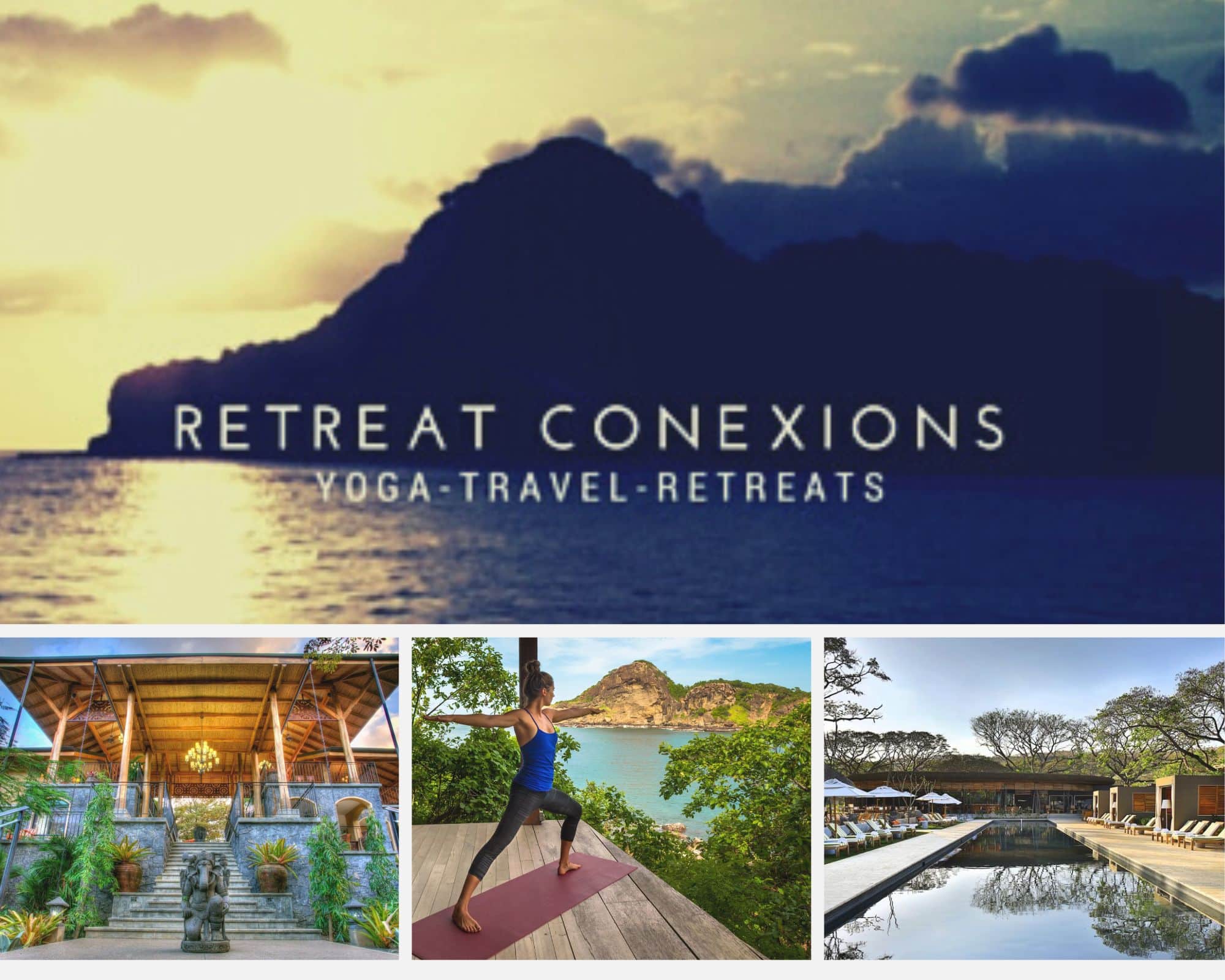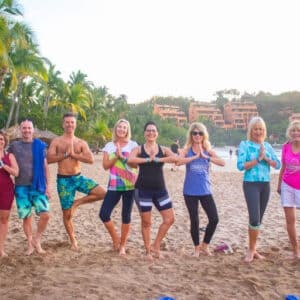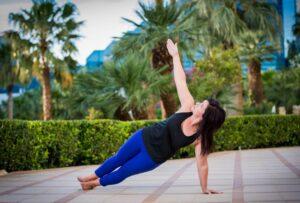Rebecca Steele
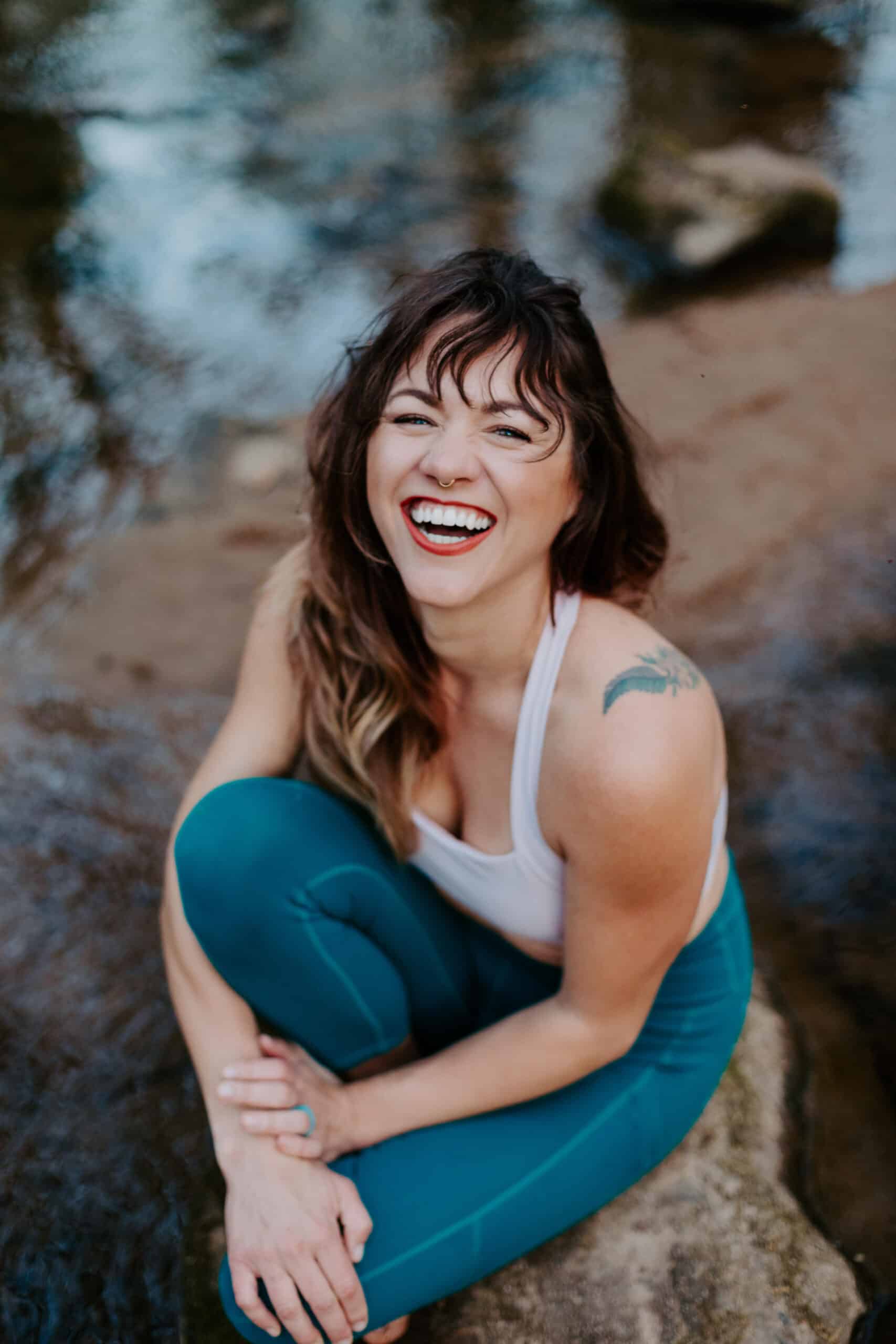
Long-Form Wellness Interview Series with Yoga Therapist Rebecca Steele
Actionable insights and practical advice for your life, health, and business.
Meet Rebecca Steele: yoga therapist, wellness innovator, and inspiring guide. In this interview, Rebecca reveals how her personal journey—from battling health setbacks (including rheumatoid arthritis from a young age), to crafting a career in yoga therapy—shaped her unique approach to healing and growth. Whether you’re a yoga enthusiast, entrepreneur, or wellness seeker, Rebecca’s story is chock full of wisdom and practical insights.
Discover how Rebecca:
- Turned personal challenges into a thriving career in yoga therapy
- Helps clients with autoimmune conditions and mental health through tailored, science-backed techniques
- Cultivates balance and empowerment in her life and others
- Breaks down “yoga myths” and redefines movement as a tool for resilience and renewal
- Creates transformative retreat experiences by blending playfulness, introspection, and connection
Learn more about Rebecca’s wellness journey and explore how yoga therapy can help you live more authentically, with strength, curiosity, and grace!


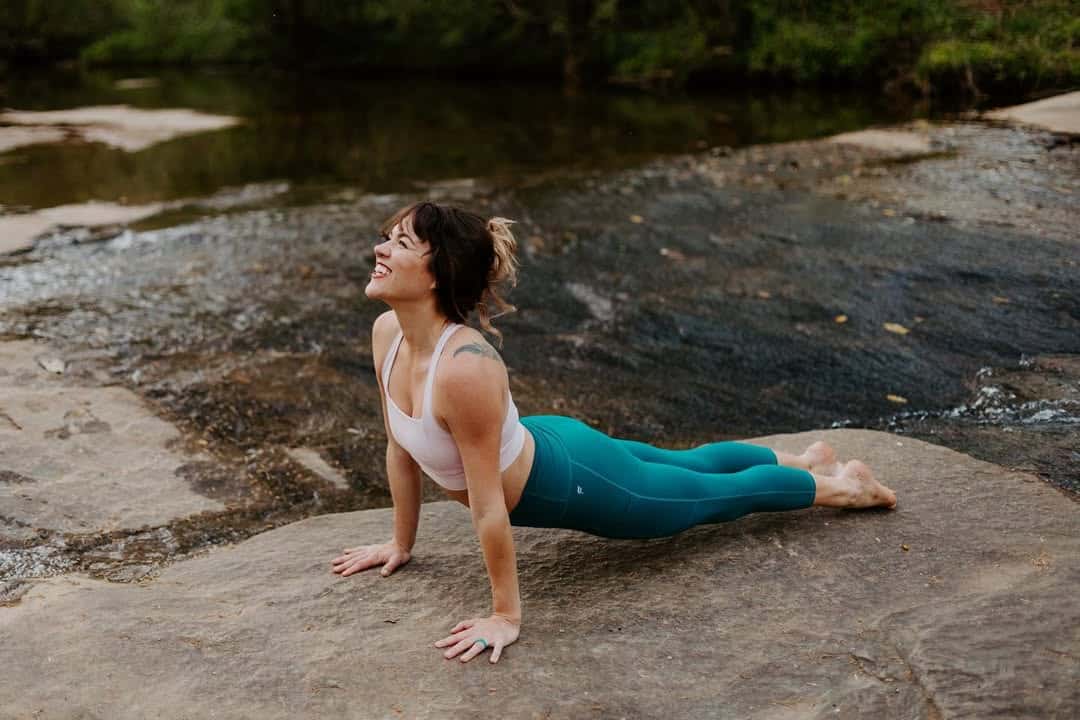
Anthony Mandela (AM):
Rebecca! Good to see you again. How was your trip to Mexico? You just got back not too long ago, yes?
Rebecca Steele (RS):
The trip to Mexico was amazing! I led a retreat during Día de los Muertos, which made everything vibrant and unforgettable. It was a small group, including my mom, and we packed in so much—artisan markets, hot springs, private cooking classes, and even a walking food tour with an old friend who’s now a professional guide. It was wonderful to see everyone step out of their comfort zones, especially my mom, who hadn’t traveled much since COVID. Despite some travel hiccups on the way back, it was an incredible experience.
AM:
Thanks so much for sharing that update! Let’s hop right in—how did your journey in the wellness space begin, and what do you love about your work?
RS:
It’s hard to pinpoint where to start, but let’s go back to when I first discovered yoga in high school. I had just quit competitive cheerleading and was in a tough mental space. Initially, I tried yoga to maintain flexibility, but within months, I noticed a significant shift. My anxiety lessened, and I felt better overall. That’s when yoga became a core part of my life.
Years later, I hit a crossroads. I had moved far from home, was preparing to get married, and my rheumatoid arthritis—something I’ve managed since childhood—flared up severely. The stress was overwhelming. Around that time, I began yoga teacher training at a studio near my apartment in Miami. It was a transformative experience, but the vigorous style of yoga I trained in wasn’t sustainable for my health.
Around that time, a friend introduced me to yoga therapy, and it changed everything. I ended up earning my certification, and over 15 years later, I’ve found my niche. I now focus on using yoga to regulate the nervous system and improve overall well-being. It’s not about touching your toes; it’s about moving better, aging gracefully, and reducing discomfort. My work also emphasizes autoimmune conditions and mental health—areas that are deeply personal to me, especially since my brother suffered from bipolar disorder.
Finally, and maybe most importantly, I listen and help others be heard. It’s so empowering to see people take control of their lives and health, to make decisions that lead to impactful change.
AM:
How would you explain “yoga therapy” to someone new to the concept?
RS:
My quick answer is that it's a more clinical modality of yoga. Yoga therapy blends Eastern traditions and philosophies with modern, evidence-based science. It fills gaps in our healthcare system by addressing the whole person—body, mind, breath, and energy. Everything is interconnected, so improving one aspect influences the others.
For example, yoga therapy builds resilience and provides tools for self-regulation. It’s not just about physical movement; it’s about creating harmony in your body and mind.
"Yoga therapy builds resilience and provides tools for self-regulation. It’s not just about physical movement; it’s about creating harmony in your body and mind."
AM:
Do clients often come to you with specific, unresolved issues?
RS:
Absolutely. Many clients come to me after exhausting traditional medical options. I’ve worked with seniors managing chronic conditions, clients with nerve pain, and those with unique challenges like TMJ, gastro-intestinal disorders, and drop-foot from traumatic brain injuries, to name a few.
One client recently shared that her cortisol levels were normal for the first time in 20 years. Another regained mobility after years of struggle and told me her physician couldn’t believe it! When you feel better physically, your mental and emotional well-being improves too. That sense of empowerment changes everything.
AM:
You mentioned working with autoimmune disorders. Can you elaborate?
RS:
Autoimmune conditions often stem from a dysregulated nervous system. By helping clients regulate their systems, we address symptoms like pain, fatigue, and mobility challenges.
For instance, one client of mine with scleroderma—a condition that hardens tissue—regained the ability to bend and tie her shoes through tailored mobility exercises. Flexibility, both physical and mental, is essential in this work. Every client is different, so I adapt to their needs day by day. Whether it’s a restorative session or strength-building, I trust my intuition to guide each session.
AM:
When clients or students approach you with specific challenges, how do you begin?
RS:
It starts with creating a safe space. Building trust is key. I observe their posture, movements, and breathing patterns while asking about their lifestyle, stressors, and support systems. This initial “check-in” teaches clients to understand their bodies better.
From there, I empower them with tools for change. A simple example is engaging the core to relieve lower back pain. It’s about giving people the knowledge and confidence to improve their well-being.
AM:
How do you structure your sessions to ensure long-term progress?
RS:
Sessions typically last an hour and I cater to everyone from adolescents to seniors. My goal is to empower clients with tools they can use independently. Many have never set foot in a yoga studio, so I make the practice approachable with what I call “yoga snacks”—small, accessible techniques they can incorporate into daily life. Ultimately, I want them to be able to transition confidently into group classes, or continue their practice solo.
AM:
What would you say is your specialty area when it comes to the field of yoga therapy?
RS:
Intuition plays a big role in my work. While I’ve studied extensively, I rely on a deep connection to understand what clients need. As an empath, I create a space where people feel safe and seen. That’s my gift—helping others feel at home in their bodies.
AM:
The intuition component is fascinating to me. Could you expound upon that? How does taking an intuition-based approach work in practice?
RS:
I love this question. What comes to mind first is that I didn't choose this life, it chose me. I'm not someone who would ever choose the title “healer,” because I think individuals heal themselves. I think that I’m just a highly nurturing and empathetic person. I see people struggling and I feel it on a visceral level; it’s one of the things that helps me have deep connections with my clients, That intuition shines through. But it can also be a double-edged sword. Empaths feel everything, good and bad.
AM:
It's such a gift to be able to let intuition guide you in working with a client. If you were to lead a workshop—short or long—what topic or topics might you choose, and why?
RS:
I really enjoy leading workshops on two main topics. First, the nervous system—helping people understand and work with it. For example, when we’re in a hyper-dysregulated state, feeling anxious or overstimulated, we approach it one way. When we’re in a hypo state—more depressive or lethargic—we approach it differently. I teach tools to help regulate these states, and there’s so much comfort in understanding that what you’re feeling has a biological explanation. It's empowering to know that you can create new neural pathways with practice. I geek out about that kind of stuff!
Another workshop I love teaching is called Off the Wall. It’s a class—sometimes an hour and a half, sometimes two hours—where we use a wall as the central prop. It’s a fun and safe way to explore poses and alignment. People always love it.
AM:
Very unique…I’ve never heard of anything quite like that. Can you give an example of how you use the wall in class?
RS:
Sure. For instance, you can use the wall for bodyweight exercises, which are great for building bone density. You can also practice poses like a safe twist in Half Moon or explore Warrior II alignment. The wall helps with stability and alignment, making it accessible for everyone.
AM:
That’s such a creative and fun use of the wall! I can see from your virtual demo that you never leave the wall; it becomes the main prop in your class.
You mentioned the nervous system earlier—how does your understanding of this system influence your coaching and teaching?
RS:
My philosophy is to meet yourself where you are. I often give this example: if you’re in a heated argument and someone tells you to calm down, are you going to calm down? Likely not—you’ll probably escalate! We need to treat our nervous systems with the same understanding.
If we’re in that red zone—agitated, anxious, in fight-or-flight—we can’t just sit down and meditate. It’s not realistic. Instead, we could move, shake, twist, or take big exhales to help bring the nervous system back to a more regulated state. Once we’re closer to homeostasis, we can start to settle.
On the flip side, if we’re in a hypo state—feeling lethargic or stuck—we need to start small. Maybe it’s just moving in bed, rolling around, or coordinating breath with movement. Then, we can work toward getting out of bed, splashing water on our face, or moving our spine. It’s all about small, gradual steps that honor where we are in the moment.
AM:
I love that insightful approach. What do you enjoy most about working with clients and teaching classes?
RS:
Honestly, it’s the people. I often say I’m incredibly fortunate to work with some of the coolest, most amazing individuals. They come from all walks of life, different ages, and unique stories. But there’s this universal thread that connects us all, and I find that so meaningful.
What’s even more rewarding is how this work helps me, too. I’ve struggled with mental health—chronic anxiety and a traumatic history. Yoga has been my lifeline. Sure, there are still some days when I don’t feel like going to work, but every single time I root back to my practice, the fundamentals, I leave feeling better. For that hour, my problems aren’t mine; I’m focused entirely on my students. It’s such a healing exchange.
AM:
Have you learned anything recently from your students that surprised or inspired you?
RS:
Oh yes, constantly. My students inspire me with their dedication to taking care of themselves—whether it’s showing up for class, prioritizing rest, or building community. It’s a reminder of how resilient and committed people can be. It’s truly a privilege to witness that.
AM:
How about mentors or teachers who’ve inspired you in your yoga therapy journey?
RS:
My teacher, Lori Natal, has been a huge influence. She trained me in Coconut Grove during my yoga therapy IAYT certification. Lori has an incredible background in Iyengar, which focuses heavily on props. She became my clinical director during the training, and I was so intimidated by her at first that I almost didn’t continue! Thankfully, I pushed through, and now Lori is like my yoga fairy godmother. She’s been there for me in every sense—she’s brilliant, authentic, and endlessly supportive.
AM:
Sounds like a powerful connection, thanks for sharing! Switching gears a bit—what skills or qualities do you think have contributed to your success?
RS:
I’d say authenticity. Yoga can sometimes feel exclusive or intimidating, like it’s only for certain people. I strive to make it approachable and real. Yoga is for everyone, and it can look however you need it to. That message really resonates with folks, and I think it’s been key to building connections in my work.
"Yoga is for everyone, and it can look however you need it to. I strive to make it approachable and real. "
AM:
Is there anything you do daily, or consistently, that helps set a positive tone for your life?
RS:
Yes, although I want to emphasize it’s a practice, not perfection. Before I get out of bed, I take a moment to check in with myself—physically, mentally, emotionally. Throughout the day, I try to stay aware of my patterns. For example, if I’m stressed, I’ll notice I’m holding my breath or pacing. That awareness helps me course-correct before I get too overwhelmed.
I also love using mantras or affirmations. Sometimes, I write them on sticky notes—little reminders like I am present or You’re doing great. It’s a simple thing, but it helps rewire the brain and keep me grounded.
AM:
Are there any myths about yoga you’d like to debunk?
RS:
Oh, for sure. The biggest one is that yoga is about touching your toes. It’s not! It’s about discovering your body, building strength, and moving in a way that works for you. You don’t have to be flexible to practice yoga.
AM:
What’s an underrated wellness practice you think people should pay more attention to?
RS:
Reframing movement and exercise. People think they need to commit an hour to yoga or a long run to see benefits, but that’s not true. Small, intentional movements throughout the day can be just as impactful. Wellness doesn’t have to be an all-or-nothing approach—it’s about making sustainable choices that fit your life.
Have grace and patience with yourself. Life happens, and we’re not always consistent, but we can always come back to our practices.
AM:
Do you have any unusual habits or something quirky and unique that you love?
RS:
Oh, goodness. So much to choose from! I always tell my kids I like to keep things weird. One quirky thing I do is walk around the house scatting [singing melodies and rhythms in vocal improv]. But here’s my favorite example of something quirky: I have a nice walk-in pantry, but instead of flipping the light on when I’m looking for something, I’ll stand there in the dark, holding the door open, relying on the kitchen light to shine through. I’ll keep pushing the door back and forth, wasting time, instead of just turning the light on.
AM:
Maybe you're conserving electricity?
RS:
Haha, no, it’s definitely not something positive I’m trying to do consciously—just a strange little habit. Oh, here’s another one. I have a lot of hair, so showering and washing it takes a long time. Some days, I skip washing it entirely, but I’ll put way more effort into making it look like I washed it than if I had just showered. These little quirks keep life interesting.
AM:
They definitely do. That’s the way to live—beat to the rhythm of your own drum.
RS:
It’s taken me a long time to embrace that, but I’m glad I did.
AM:
Rebecca, do you have advice for someone looking to take their yoga practice to the next level?
RS:
One of my favorite concepts comes from a yoga therapy colleague of mine, Amanda. Her core value is curiosity, and it has deeply resonated with me over the past couple of years. I think approaching yoga—and also life—with curiosity is a game-changer.
Be curious about trying new styles, slowing down, challenging yourself, or making the practice truly yours. Curiosity creates space to explore without judgment. Instead of thinking, I should be more flexible, or I wish this didn’t hurt, curiosity invites questions like, Why is this side tighter? or How can I adjust my movements to feel better?
It’s about replacing self-criticism with wonder. Whether you’re a beginner or a seasoned yogi, approaching yoga with curiosity transforms it into a personal and empowering journey.
"Be curious about trying new styles, slowing down, challenging yourself, or making the practice truly yours. Curiosity creates space to explore without judgment."
AM:
I love that perspective—just be curious. It’s a powerful, game-changing mindset.
If you could give advice to your younger self, what would it be?
RS:
What comes to mind isn’t just about wellness: it’s about life in general. I’d tell myself, It’s going to get better. That simple reminder has been so healing for me.
I also love this perspective I now share with my clients: You’ve made it through every difficult thing you’ve faced so far. That’s proof you can handle what’s ahead. When things felt hopeless in the past, it was that belief that pulled me through.
AM:
Would you be willing to share a time when you faced a significant setback? How did you overcome it, and what did you learn?
RS:
Sure. Most recently, I went through a divorce. It’s something I wouldn’t wish on anyone. As a mom of three, going from having my kids full-time to sharing custody was incredibly tough. There were weeks when I couldn’t get out of bed because I was so depressed. Yoga saved me. Even on the hardest days, I’d push myself to the studio. Moving my body, even just a little, reminded me that I could keep going.
Another defining moment was in 2017, when my brother passed away from bipolar disorder. That loss solidified my passion for mental health. Yoga wasn’t just a practice for me; it became a lifeline. That’s why I’m so passionate about sharing it with others—it’s genuinely life-changing.
AM:
I’m so sorry to hear about your brother.
RS:
Thank you. It’s still hard, but there’s peace in knowing he’s no longer suffering.
AM:
For entrepreneurs or creators building something new, what advice would you give based on your journey?
RS:
First, not every opportunity is the right one. Especially in industries like wellness, where income often depends on clients or classes, it’s tempting to take every job that comes your way. But I’ve learned that losing an opportunity—whether it’s because of circumstances or misalignment—often means it wasn’t right for you. For example, I once missed some bookings after a car accident, and while it stung at the time, I later realized that job wasn’t the right fit. Don’t take these losses personally. What’s meant to work out will.
AM:
Are there any books or resources you’d like to recommend?
RS:
The Body Keeps the Score by Bessel Van Der Kolk, M.D. is a must-read if you’re interested in the neuroscience of trauma and healing. It’s a bit dense, but so insightful.
Another favorite is The Yamas & Niyamas by Deborah Adele. It’s a practical guide to the ethical principles of yoga, like non-violence and truthfulness, and how to apply them in everyday life. For example, non-violence isn’t just about actions—it’s about how we treat ourselves, like avoiding overindulgence or prioritizing rest. It’s a fantastic resource.
Finally, there’s an auditory resource that I’d like to recommend. I play it often for my clients. I use it for my classes, for seniors…for my kids. It’s a chant that you can do with subtle finger movements, if you like. It’s just so relaxing and calming, and it helps you fall into a meditative state. Many people asl me about it so I’d love to share the Spotify link here: Om Mani Padme Hum.
AM:
What’s the most worthwhile investment of time, money, or energy that you have ever made?
RS:
Without a doubt, jumping into my first yoga teacher training. I had no clear direction at the time—I’d dropped out of college multiple times—but something drew me to that training, and it changed my life. It set me on the path to my true calling.
AM:
Is there a product in your industry—physical or otherwise—that you absolutely love and can't live without?
RS:
My go-to is the yoga bolster.
AM:
Can you give more detail on this? Do you have a favorite bolster? I have a feeling you may have a preference…
RS:
A bolster is a large, rectangular cushion—thick and wide—that’s incredibly versatile for restorative yoga. You can use it to support so many poses. But honestly, you don’t even need an official bolster. Pillows or couch cushions work too! Yoga is about adapting to what you have.
I think there’s this myth that you need all the “right” gear to practice yoga, but that’s not true. You don’t even need a mat. I often just practice on the floor. Yoga can be accessible wherever you are—whether you’re on a chair, the floor, or using what’s around you.
However, since you asked, yes—I do have a favorite bolster. It’s called the Retrospec Sequoia Rectangular Yoga Bolster Pillow and Meditation Cushion and you really can use it for everything. I’m particular about bolsters because the width, height, and durability make a difference. Some on the market are too flimsy and lightweight; they’re great for travel but not ideal for solid support. You need one that’s sturdy.
AM:
Thank you for the recommendation. How about a favorite restorative pose?
RS:
Oh, yes! And I have a funny story about that. Once, I was teaching a private client at a clinic. Mid-session, she stepped out to go to her car, so I put myself into my favorite restorative pose while waiting. Well... I accidentally fell asleep! Meanwhile, the door locked automatically, and the client was stuck outside.
But that story reminds me of my favorite restorative pose which is simply reclining back on a bolster. You just let your body relax—legs splayed, arms open—it feels SO good. Another one I love is lying belly-down on the bolster, hugging it or resting one knee on top. There are so many options.
AM:
What’s a project you’re working on right now that excites you?
RS:
Well, our upcoming retreat in Costa Rica is super exciting! I also have a few more retreats in the works for next year. Beyond that, I’m transitioning my focus to teaching and mentoring other yoga instructors. It’s a gradual process—nothing happens overnight.
Patience is key, and I’ll admit, it’s not my strong suit! But I’ve learned to trust the process. Clients, opportunities—they come and go. Staying grounded and allowing things to evolve naturally is so important.
AM:
Could you give people a sense of what it’s like to attend one of your retreats?
RS:
Oh, where do I start? Expect lots of laughter. There might be moments for emotional release—crying, connecting, bonding. Each retreat is unique because it’s shaped by the people who attend. You’ll experience rest, intentional pauses, playfulness, and a connection to nature. And, of course, we’ll enjoy amazing food. I truly believe laughter is one of the best medicines, and I love creating a space where people feel nurtured and inspired. Our retreats emphasize rest, rejuvenation, and connection—to yourself, to others, and to the natural world. There will be plenty of time to pause, reflect, and immerse yourself in playfulness, which I believe is a vital form of healing and renewal.
To make the experience even more enriching, my co-instructor Mallory Hazen and I plan to offer the option to connect with us one-on-one before the retreat. These pre-retreat calls are designed to help you clarify your intentions, receive personalized guidance, and feel more prepared for the journey ahead. This extra connection point can enhance the retreat experience and provide a deeper sense of purpose.
Ultimately, a retreat is about stepping away from the demands of daily life to embrace self-care, build community, and cultivate a sense of renewal. It's a gift of time and space to focus on you—and that's a powerful thing.
"Our retreats emphasize rest, rejuvenation, and connection—to yourself, to others, and to the natural world."
AM:
That sounds amazing. I’m so excited to see you collaborate with Mallory on this. You two have such complementary styles—her wellness coaching and dance background are so unique.
RS:
I can’t wait!
AM:
I know the two of you will create something truly transformative for attendees.
RS:
Retreats like these are once-in-a-lifetime experiences. They’re chances to meet incredible people, nurture yourself, and connect with something deeper.
AM:
Well, Rebecca, this has been such a fascinating conversation. Thank you so much for taking the time.
RS:
Thank you, Anthony.
AM:
Before we wrap up, is there anything we didn’t cover that you’d like to add?
RS:
I think we covered a lot!
AM:
We did! Where’s the best place for people to find you?
RS:
Right now, Instagram—@RebeccaSteeleYoga—is the best place. https://www.instagram.com/rebeccasteeleyoga/
AM:
Perfect. Thanks again, Rebecca, I’m so looking forward to our upcoming retreat collaboration.
RS:
Same here. Have a wonderful day!
AM:
Take care!
Reader Note: Thanks for taking your valuable time to read this long-form interview. I hope these stories help you discover inspiration and advice that improves your life in a meaningful way.
Interested in receiving a periodic newsletter with curated, quality content (edited, long-form interviews) from successful fitness professionals around the world? If so, I’d love it if you would sign up here.
Are you a professional in the fitness industry with over five years teaching experience? Would you like to learn more how my retreat leader matching and logistics services can help propel your business to the next level? If so, please take 5 minutes to tell me more about your goals, experience, and areas of expertise here.
